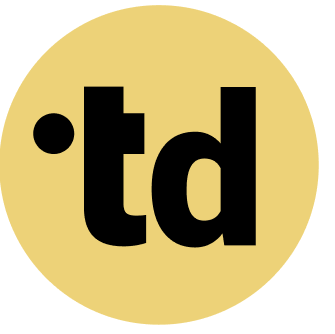Key Takeaways
With over 60% of German employees using AI informally, creating clear protocols for human-AI interaction is essential to reduce chaos and operational risk.
Effective protocols define AI's role, set communication channels, and establish clear handoff points, which can speed up project tasks by up to 50%.
Strong governance, including continuous monitoring and cross-functional oversight, is crucial for scaling hybrid teams and ensuring compliance with regulations like the EU AI Act.
The rush to integrate AI has left many teams in a state of digital whiplash. With 62% of German companies now using AI, many are operating without a map, leading to confusion and inefficiency. The hero of this story is your team, and the challenge is taming the beautiful chaos of human-AI collaboration. This article is your guide to creating protocols for human-AI interaction, turning your team into a high-performing hybrid powerhouse. We will show you how to define roles, establish clear guidelines, and measure success, transforming team friction into flow.
Practical Framework for Team Architects
As a Team Architect, you can apply these principles to your organization:
- Map Current State: Document existing roles and responsibilities using a tool like teamdecoder.
- Identify Gaps: Where are roles unclear? Where do humans and AI agents overlap?
- Define Clear Boundaries: Specify which tasks are handled by humans vs. AI agents.
- Create Accountability: Assign clear decision rights for each role.
- Iterate and Improve: Continuously refine based on team feedback.
Teams Just Wanna Have Fun (But Are Drowning in AI Chaos)
Many teams are struggling with undocumented AI use. More than 60% of employees in Germany are using AI informally, creating significant operational risks. This shadow adoption means there are no standards for quality, ethics, or even which tool to use for a given task. The result is a the vast majority of chance of inconsistent outputs and duplicated effort.
This lack of governance creates a trust deficit. While many Germans use AI, only many trust the information it generates, a gap that directly impacts decision-making speed. Without clear protocols, teams spend up to a portion of their time just validating AI-generated work. This uncertainty is a major barrier to realizing the productivity gains AI promises, a topic we explore in avoiding common pitfalls.
The pressure on Team Architects is immense. With a significant number of European employees worried about job disruption from AI, clear structure is no longer a luxury. The challenge is to channel this chaotic energy into a structured system that empowers Many people, which requires a new way of thinking about team design.
Build a Framework for Human-AI Collaboration
Effective human-AI interaction begins with a deliberate framework. Microsoft offers 18 evidence-based guidelines, starting with making it clear what the Teams that implement such clarity see a a portion of reduction in project errors.ion in project errors. This first step transforms ambiguity into a clear operational advantage.
Defining roles and responsibilities is the By 2030, automation could impact some all hours worked in Europe, requiring massive role shifts.g massive role shifts. A protocol clarifies who is accountable-the human expert or the AI agent-for each step in a workflow. For more on this, see our guide to managing roles in one platform.
Our Playful Tip: Start with a simple two-column list for a single process. List every human task in one column and every This simple exercise can reveal up to some your team's hidden friction points.idden friction points. This initial map is the foundation for a robust system of creating AI accountability.
Deep Dive: Successful protocols go beyond tasks to define data governance. The EU AI Act places stringent requirements on data quality and oversight, affecting nearly ever Your protocols must specify data handling rules, ensuring compliance and reducing legal risks by over a significant portion.gal risks by over 50%. Now, let's detail the specific components of these protocols.
Make Bots and Humans Click With Clear Protocols
Clear protocols are the key to unlocking hybrid team performance. They act as the user manual for your team's unique human-AI system. Organizations with documented AI protocols report that their teams handle project tasks up to 50% faster. This structure provides the psychological safety needed for confident adoption.
Here is how to structure your interaction protocols:
- Define AI's Role: Specify if the AI is an assistant, a peer, or a tool, which sets interaction expectations for the most European companies piloting automation.
- Set Communication Channels: Establish how humans query the AI and how the AI reports its findings, reducing communication errors by 25%.
- Establish Handoff Points: Clearly mark the moment a task moves from human to AI and back, a crucial step for planning task handoffs.
- Create an Escalation Path: When an AI produces a questionable result-a concern for the many Germans who distrust AI info-who reviews it?
- Mandate Transparency: Require that all AI-generated content is clearly labeled, a rule supported by most Europeans who want careful AI management.
You can try teamdecoder for free to start building these roles. This structured approach not only improves efficiency but also builds the trust needed for genuine collaboration, which is essential for scaling these new team structures.
Scale Your Hybrid Team With Strong Governance
Scaling human-AI teams requires a shift from ad-hoc rules to formal governance. Com Companies like Deutsche Bank are flattening their hierarchies, removing over some managerial roles in some areas after AI implementation.s change demands a new system for oversight that empowers teams while maintaining control. Your protocols provide this essential governance layer.
Effective governance anticipates regulatory changes. With the EU AI Act phasing in, organizations need robust testing and evaluation capabilities. Your protocols should include a continuous monitoring plan to ensure your AI systems remain compliant and effective. This proactive stance is vital for any leader involved in governing AI agents.
Our Playful Tip: Create an "AI Council" with members from different departments. This group can review new tools and update protocols quarterly. Thi This cross-functional approach increases AI adoption success by a significant portion.ensures your organizational development keeps pace with the technology.
This governance framework is not just about rules; it is about creating a resilient organization. It prepares you to manage the a portion of occupational transitions expected in Europe by 2030. With a solid structure in place, your team is ready for the future of work.
The Result: A Clear, Confident, and High-Performing Team
Teams with clear human-AI protocols win. They replace ambiguity and change fatigue with clarity and flow. This leads to measurable improvements, as organizations with strong hybrid team governance see profitability rise by over a significant portion. This clarity directly addresses the concerns of the a significant number of Germans who believe AI can improve work, but only if managed well.
This new operational model redefines roles and responsibilities for the better. With routine tasks automated, human team members can focus on more strategic work, boosting job satisfaction by an average of a significant portion. This shift is critical for retaining top talent in an era of rapid transformation. For more on this, see our article on designing workflows.
Ultimately, creating protocols for human-AI interaction is about building a smarter, more resilient organization. It empowers Team Architects to design the future of work, one clear role at a time. See our pricing to learn how our tools can help. The journey from chaos to clarity makes change feel less like a threat and more like play.
Try teamdecoder for free - shape your team and make change feel like play!
#TeamArchitecture #HybridTeam #HumanAICollaboration #OrganizationalDevelopment
More Links
German Federal Government provides insights into Germany's official strategy for artificial intelligence.
Federal Ministry for Economic Affairs and Energy offers an article on artificial intelligence and its implications.
German Federal Government provides access to various publications related to artificial intelligence.
Federal Ministry of Labour and Social Affairs offers a PDF document detailing technology scenarios and the impact of generative AI on work until 2030.
German Federal Government provides a PDF document outlining their 2018 AI strategy.
Federal Ministry for Family Affairs, Senior Citizens, Women and Youth discusses a study examining public attitudes towards artificial intelligence.
Leibniz Centre for European Economic Research (ZEW) explores how employees utilize AI even without formal company implementation.
German Chamber of Industry and Commerce (DIHK) examines how AI is influencing Germany's economic development.
FAQ
How does teamdecoder help create these protocols?
teamdecoder provides a platform to visually map out and define every role and responsibility within your team, including those of AI agents. Our templates and tools help you build clear protocols, manage hybrid team structures, and adapt quickly to change.
Can these protocols be applied to any industry?
Yes. The principles of defining roles, responsibilities, and workflows are universal. Whether you are in tech, manufacturing, or creative services, creating clear protocols for human-AI interaction will reduce friction and improve performance.
How often should we update our human-AI interaction protocols?
We recommend reviewing your protocols quarterly or whenever a new, significant AI tool is introduced. The technology evolves rapidly, and your protocols must keep pace to remain effective and compliant.
What is the biggest challenge in implementing AI protocols?
The biggest challenge is often cultural resistance to change and a lack of understanding of AI's capabilities and limitations. A successful implementation requires clear communication, stakeholder buy-in, and practical training, like what we cover in our guide on training team members to work with AI.
Where can I find official guidelines for human-AI interaction?
Researchers at Microsoft have synthesized over 20 years of research into 18 distinct guidelines for human-AI interaction. Additionally, regulatory bodies like the European Union are establishing legal frameworks, such as the EU AI Act, which set requirements for high-risk systems.
How do I ensure my AI protocols are ethical?
To ensure your protocols are ethical, they must include provisions for transparency, accountability, and fairness. This involves clearly labeling AI-generated content, defining who is responsible for AI errors, and regularly auditing your systems for bias. Our article on the ethics of AI in teams provides a deeper look.





